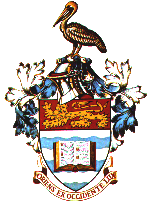![]()
![]()
![]()
![]()
![]()

![]()
![]()
![]()
![]()
![]()
We have talked about how the genetic material encodes information, induction of mutation, types of mutagens and classes of mutations. Now I want to talk about isolation and analysis of mutant organisms.
The majority of work which has contributed to our understanding of genetics has involved the analysis of mutants. It is only relatively recently that we have been able to look at genes as pieces of DNA and even these DNA fragments have usually been isolated by their ability to transform mutant strains which are impaired in the function of the gene in question. We deduce function of genes by looking at which function is absent in strains lacking the gene, i.e. mutants.
So mutants are of major importance in genetics because by knowing or deducing what has changed in the mutant gene the function of the normal or wild type can be inferred. Also, if the mutant and wild type genes control a clear-cut difference in phenotype in the organism, then crosses procedures can allow the gene to be mapped within the genome and studied in more detail.
We have already looked at induction of mutations. Mutations occur naturally at low frequency - these are spontaneous mutations. The frequency of spontaneous mutations is variable between organisms and also between different genes in the same organism, but average sorts of figures are:
i) 10-6 per gene per nuclear division in bacteria
ii) 10-9 detectable mutations per nucleotide pair per nuclear division for a genome of 1 kb
Before mutants can be analysed they must be detected and isolated or separated from non-mutants. Consequently, geneticists have to devise methods for inducing mutations and methods for detecting mutants in the desired gene or pathway. A majority of mutations are in fact lethal or highly deleterious unless special conditions are provided, so methods have to be devised to be able to select for a particular mutant so that it can be kept alive.
Before we look at methods for isolating mutants we must look at class of mutants that are commonly studied. Two classes of mutants are:
a) morphological - show a visible change in phenotype
b) auxotrophic - require a particular nutrient(s) not required by the wild type. Auxotrophic mutants cannot grow unless the particular nutrient is provided
NB: organisms that can grow in MM are called prototrophs
This template created by the Web Diner.